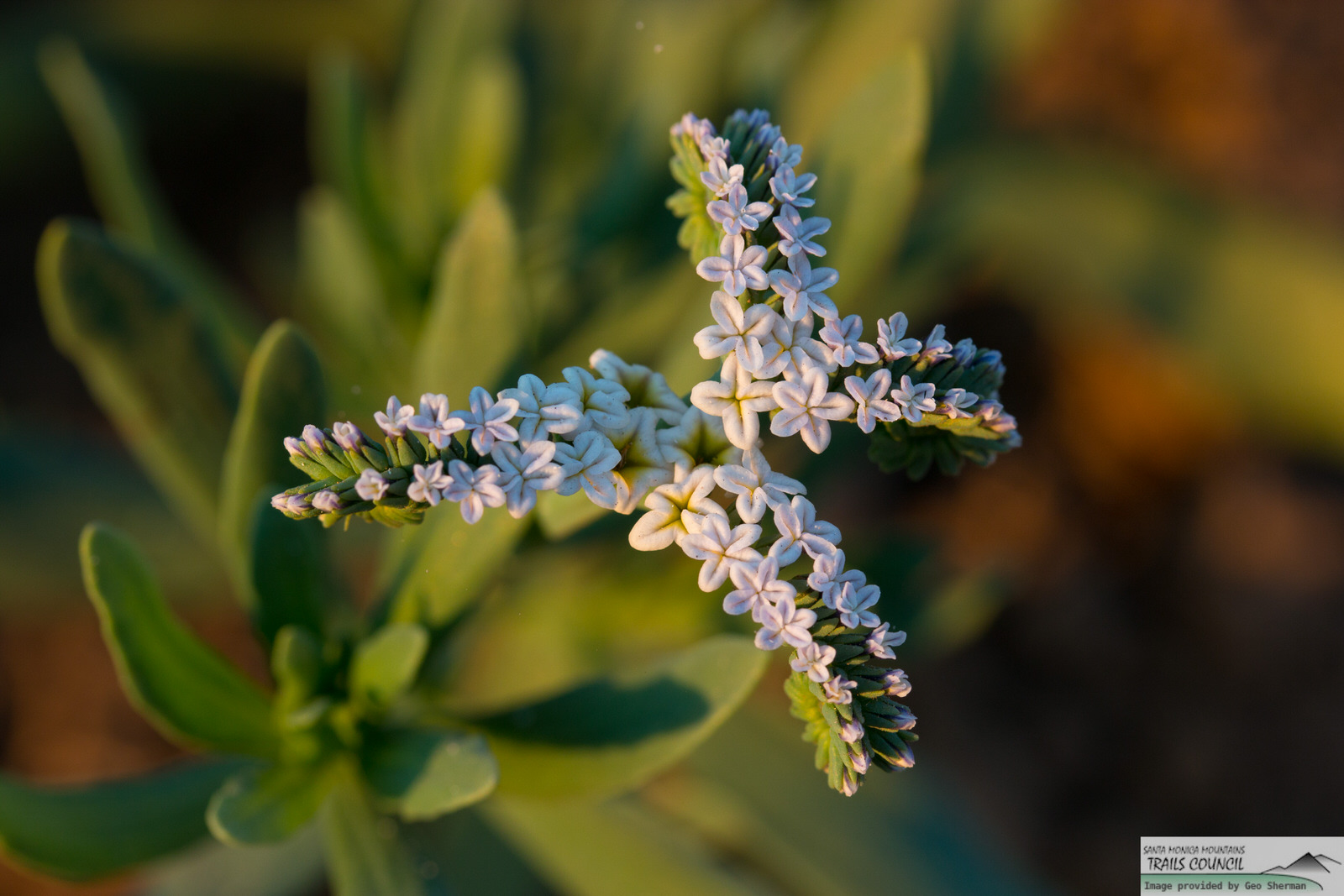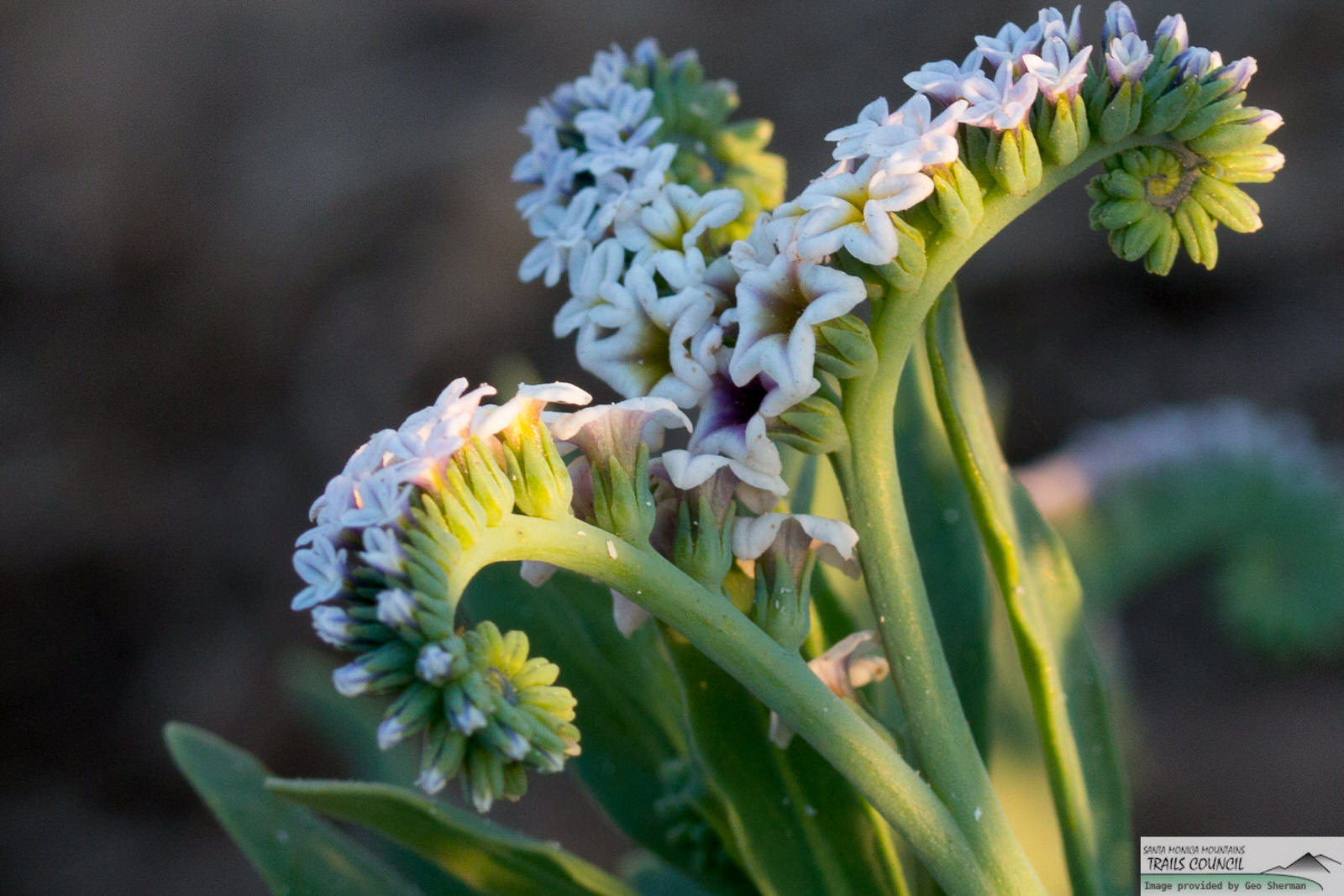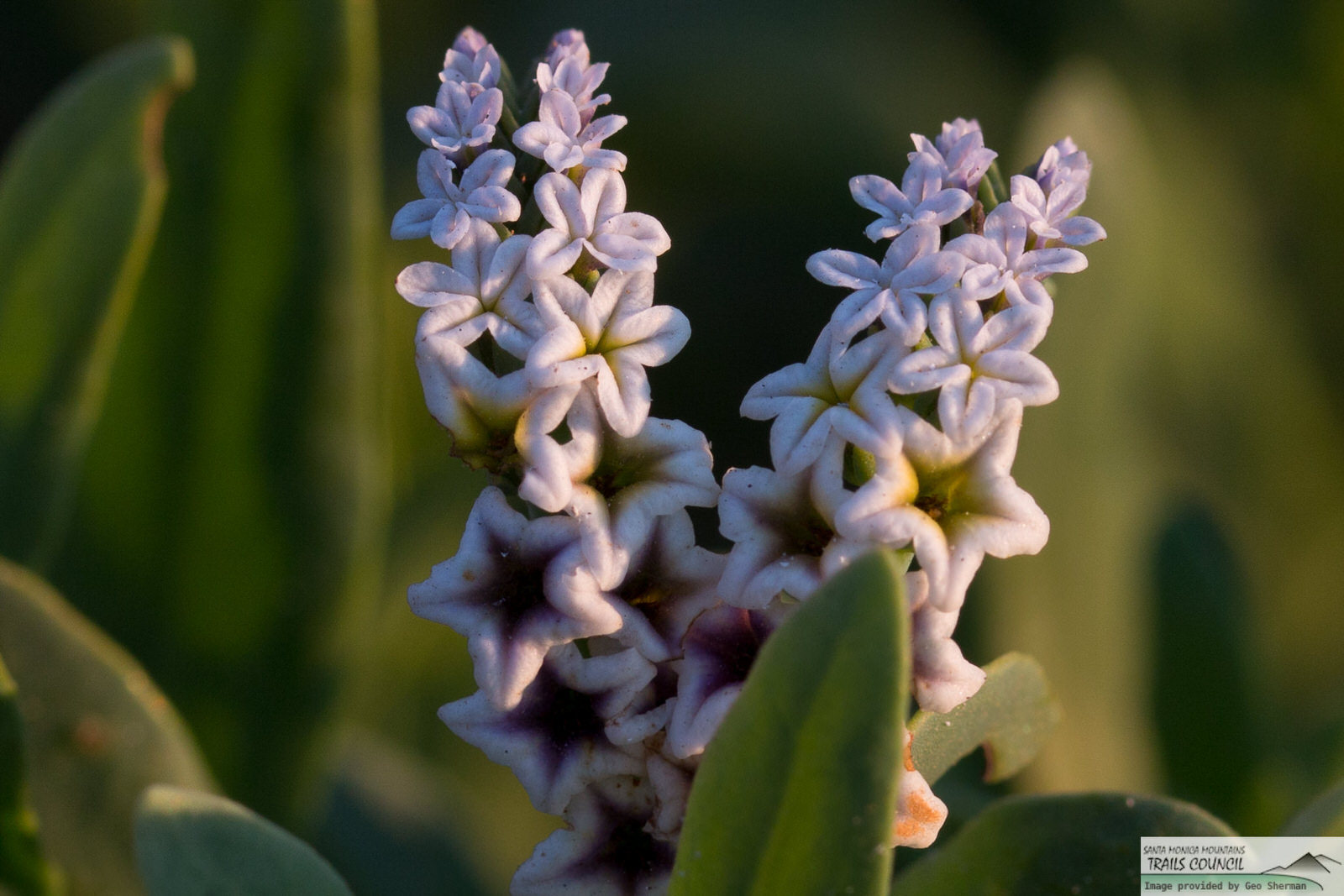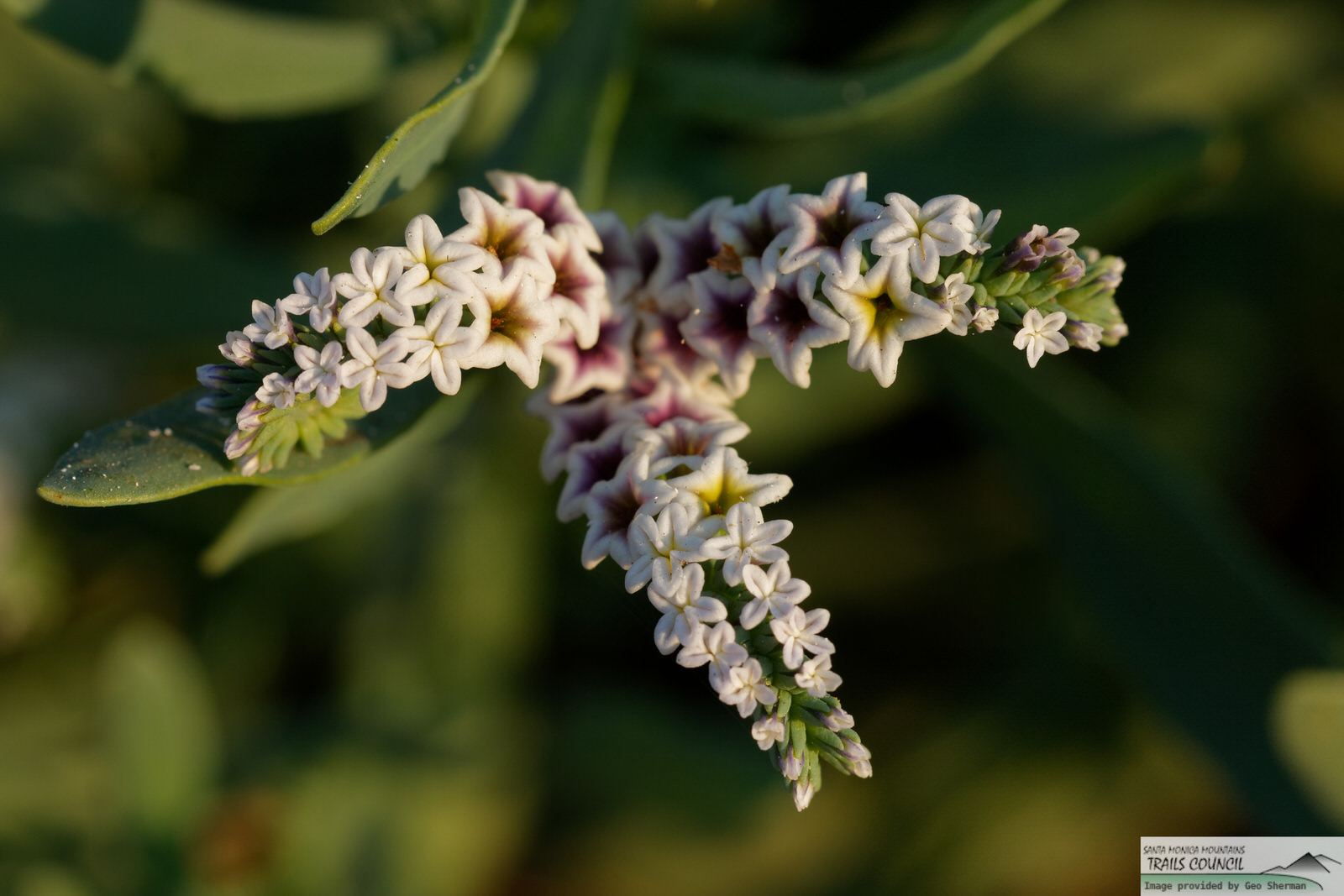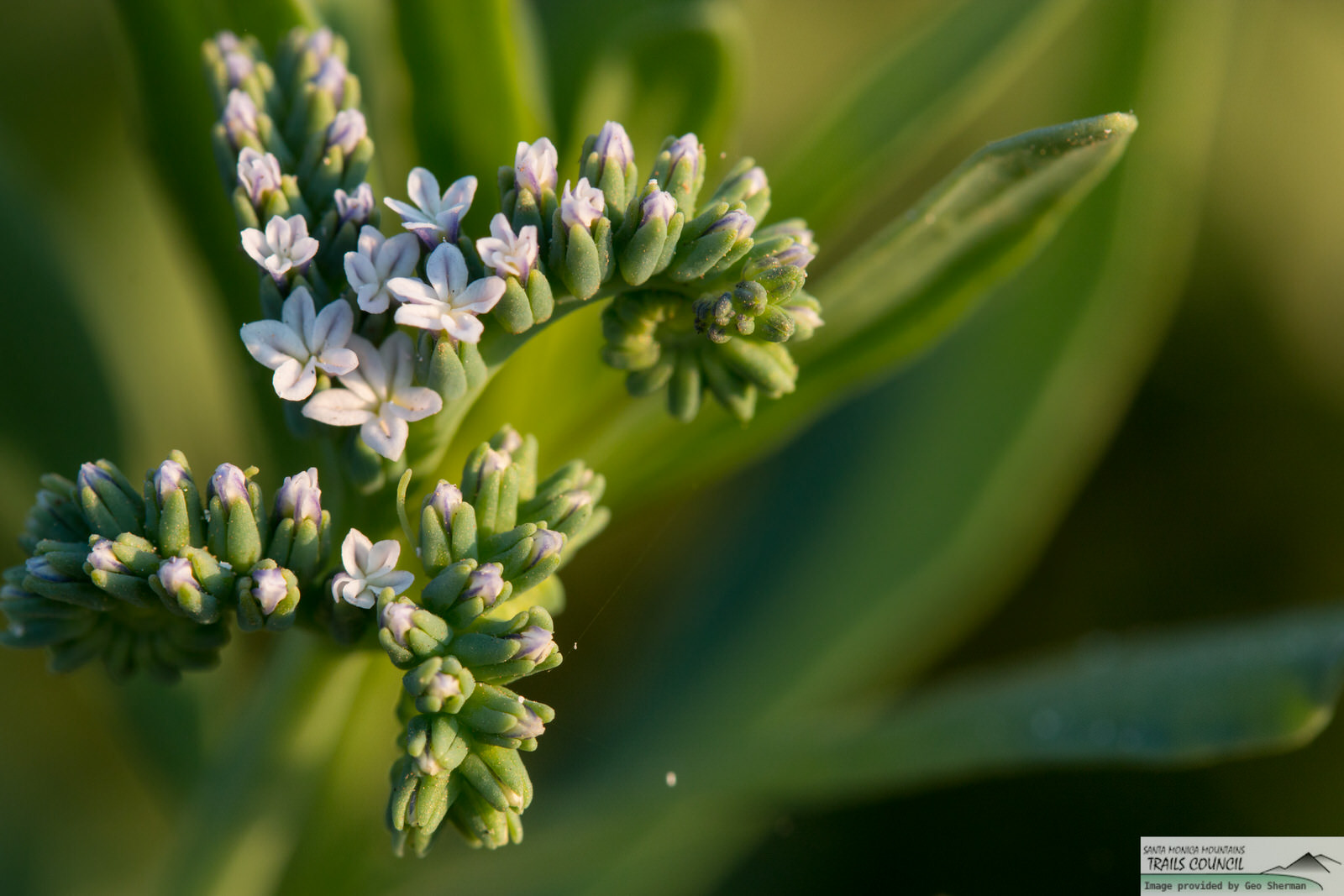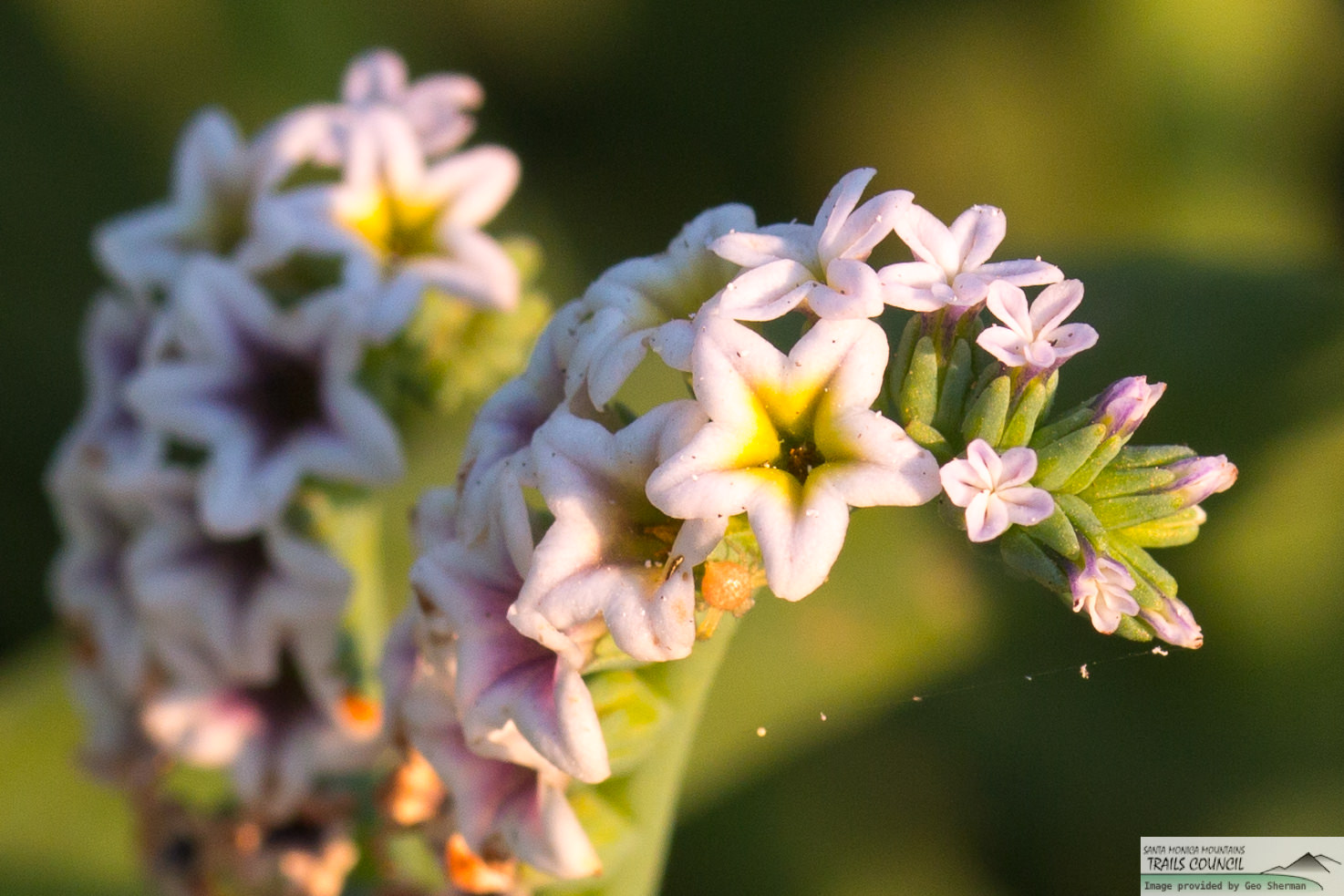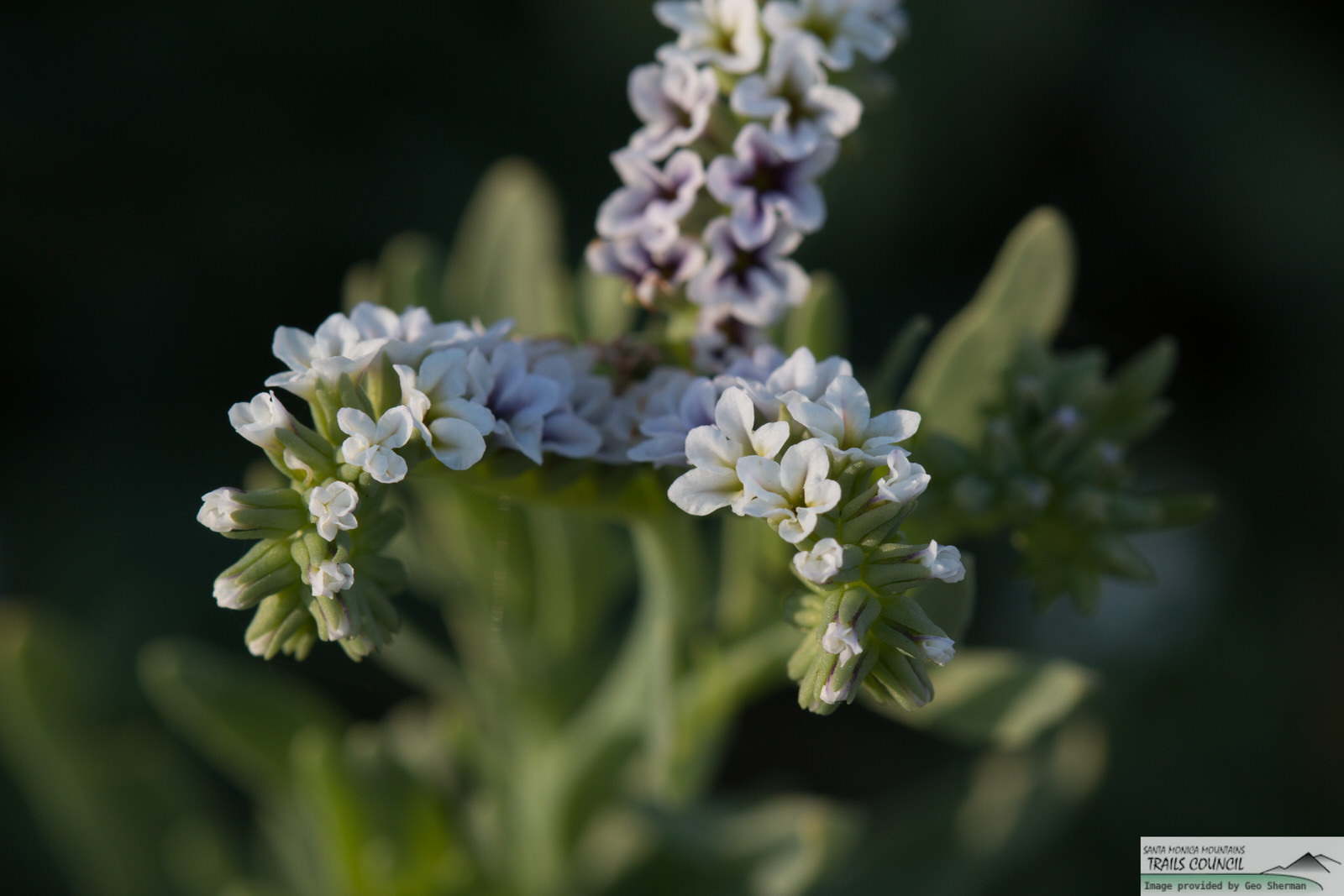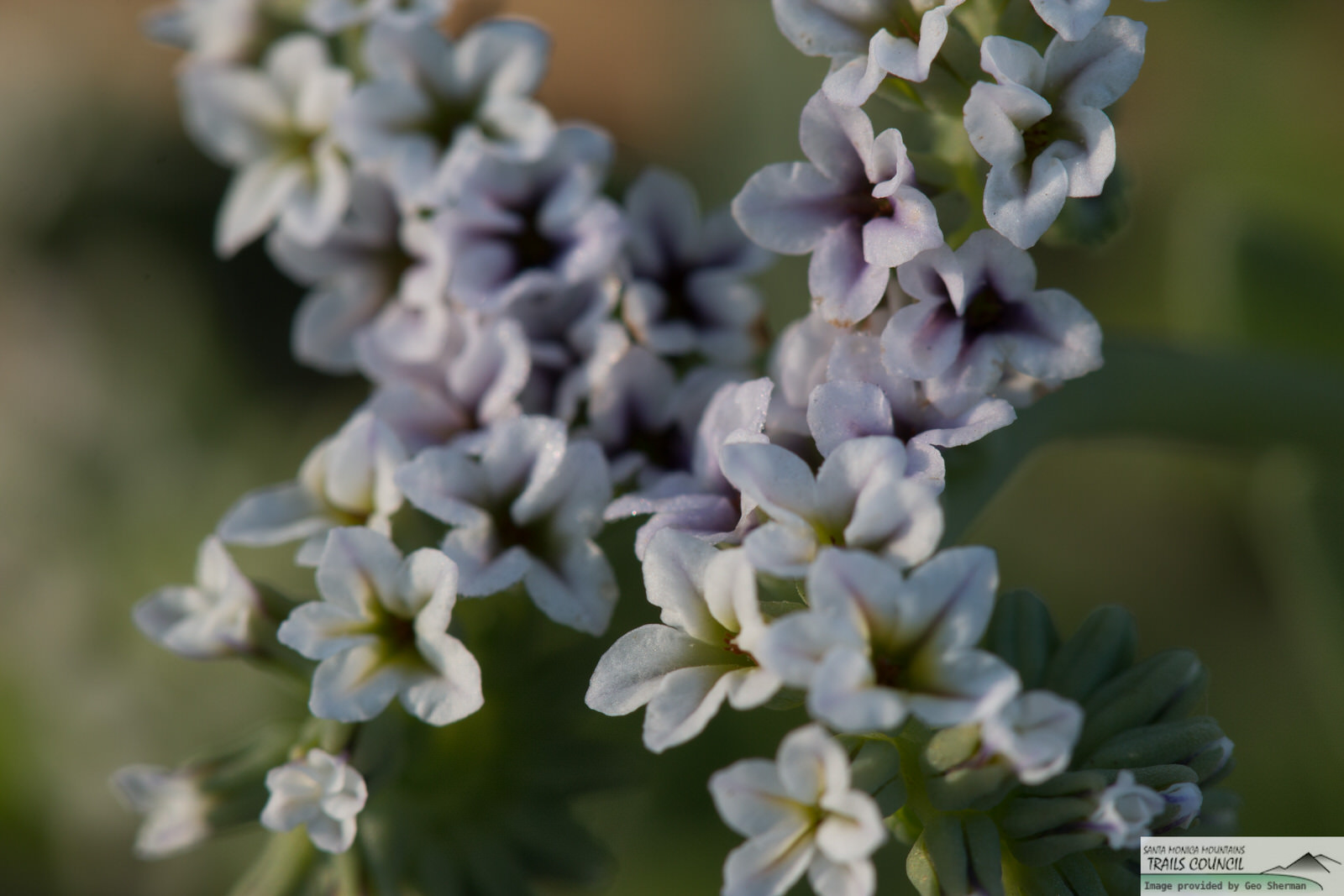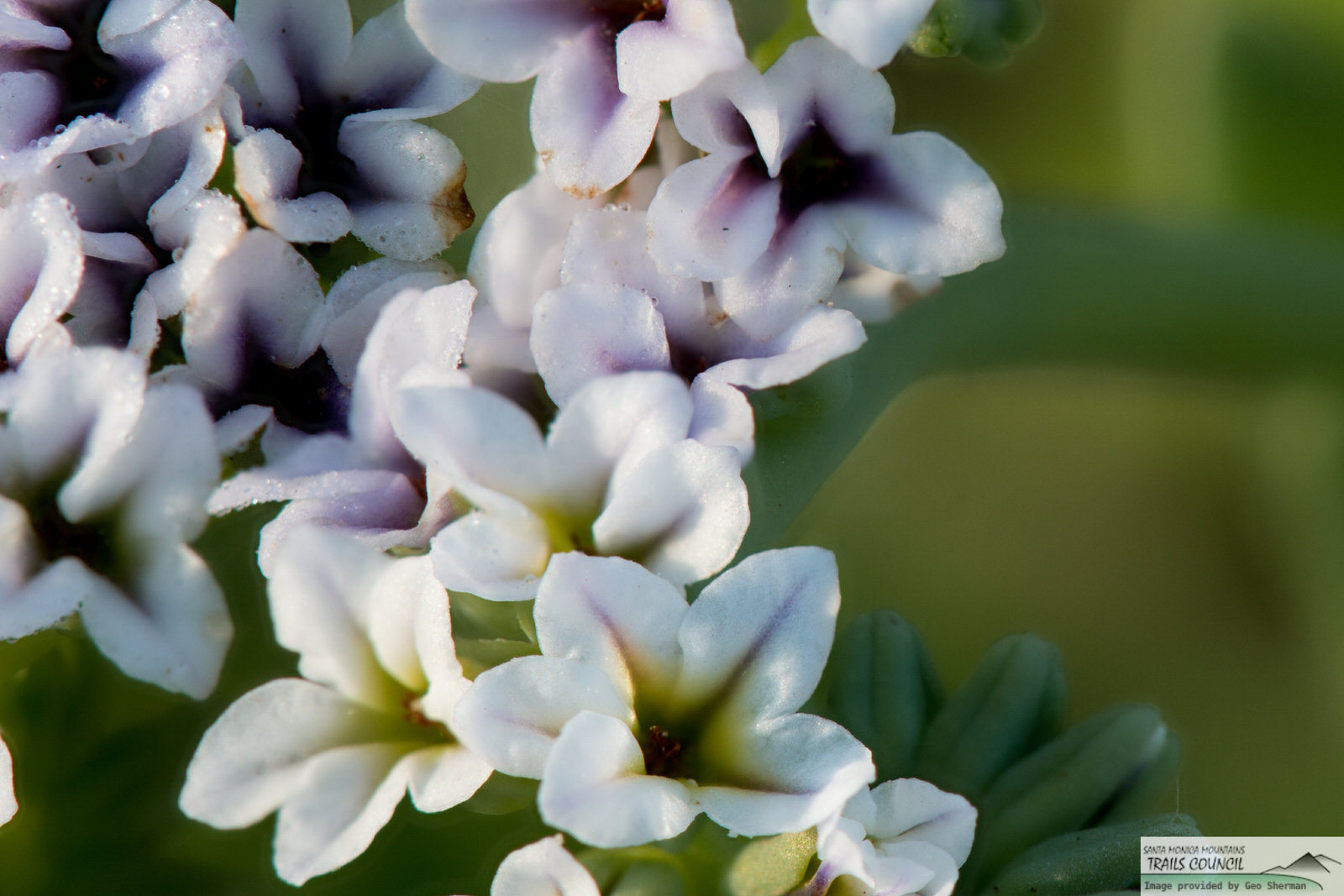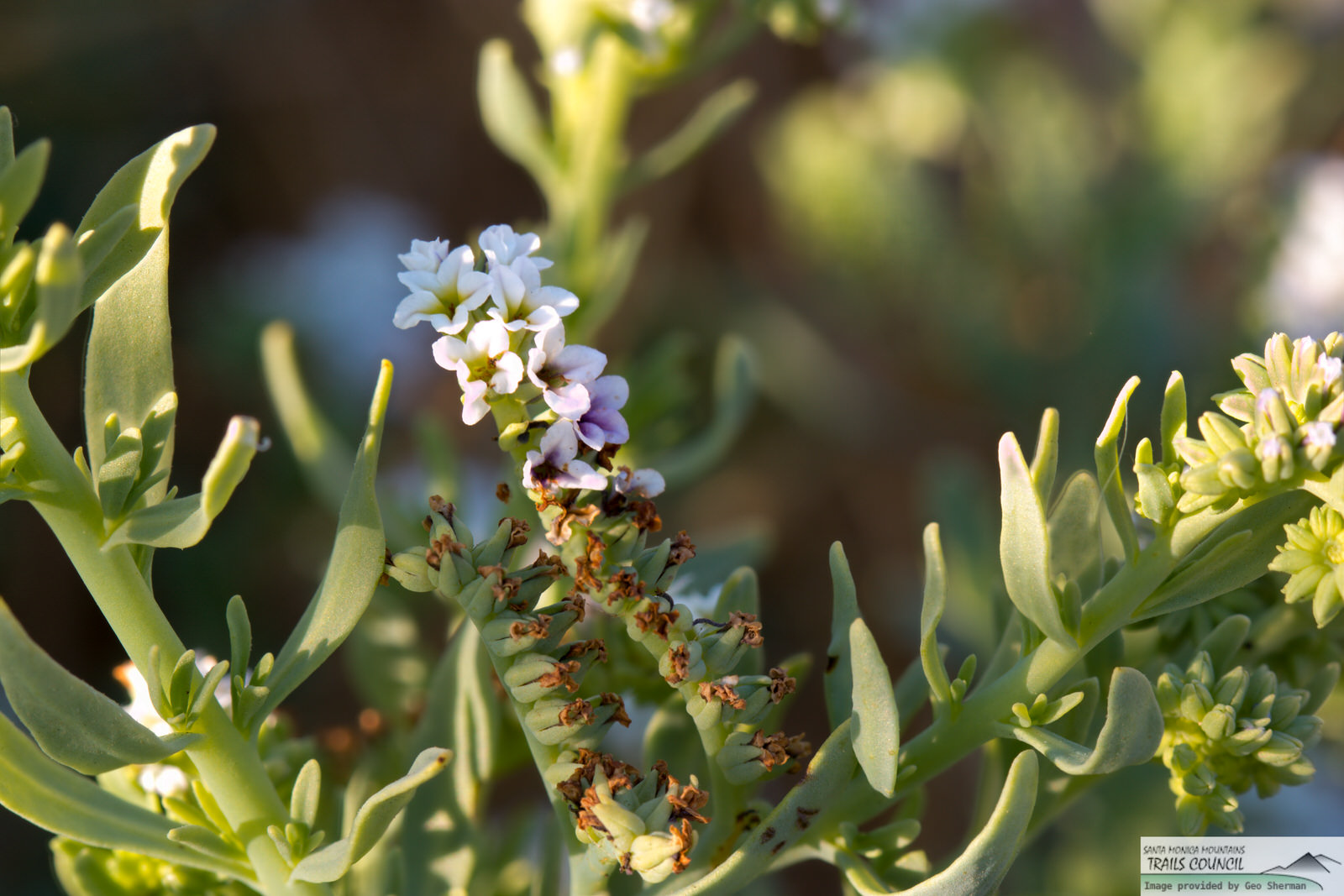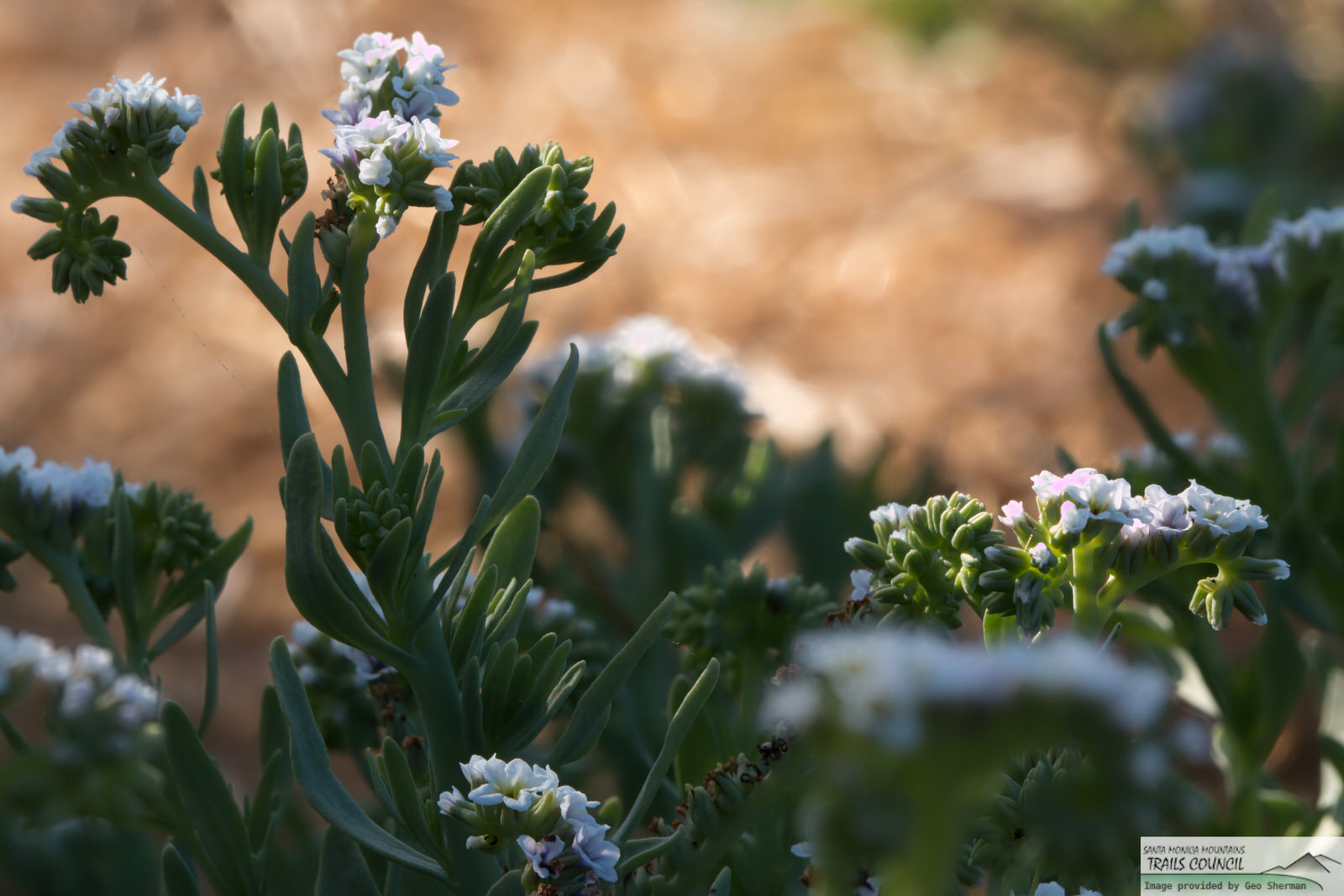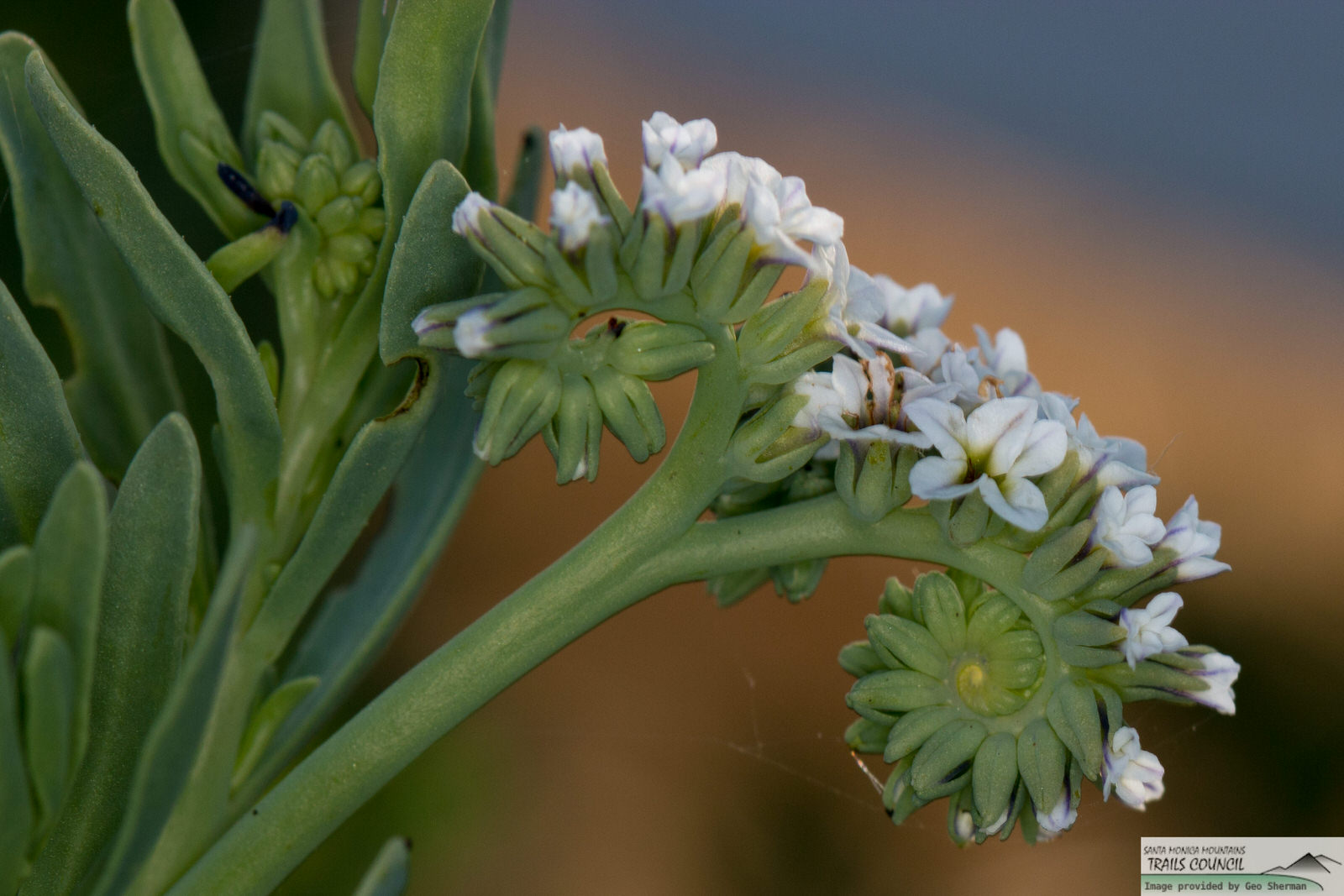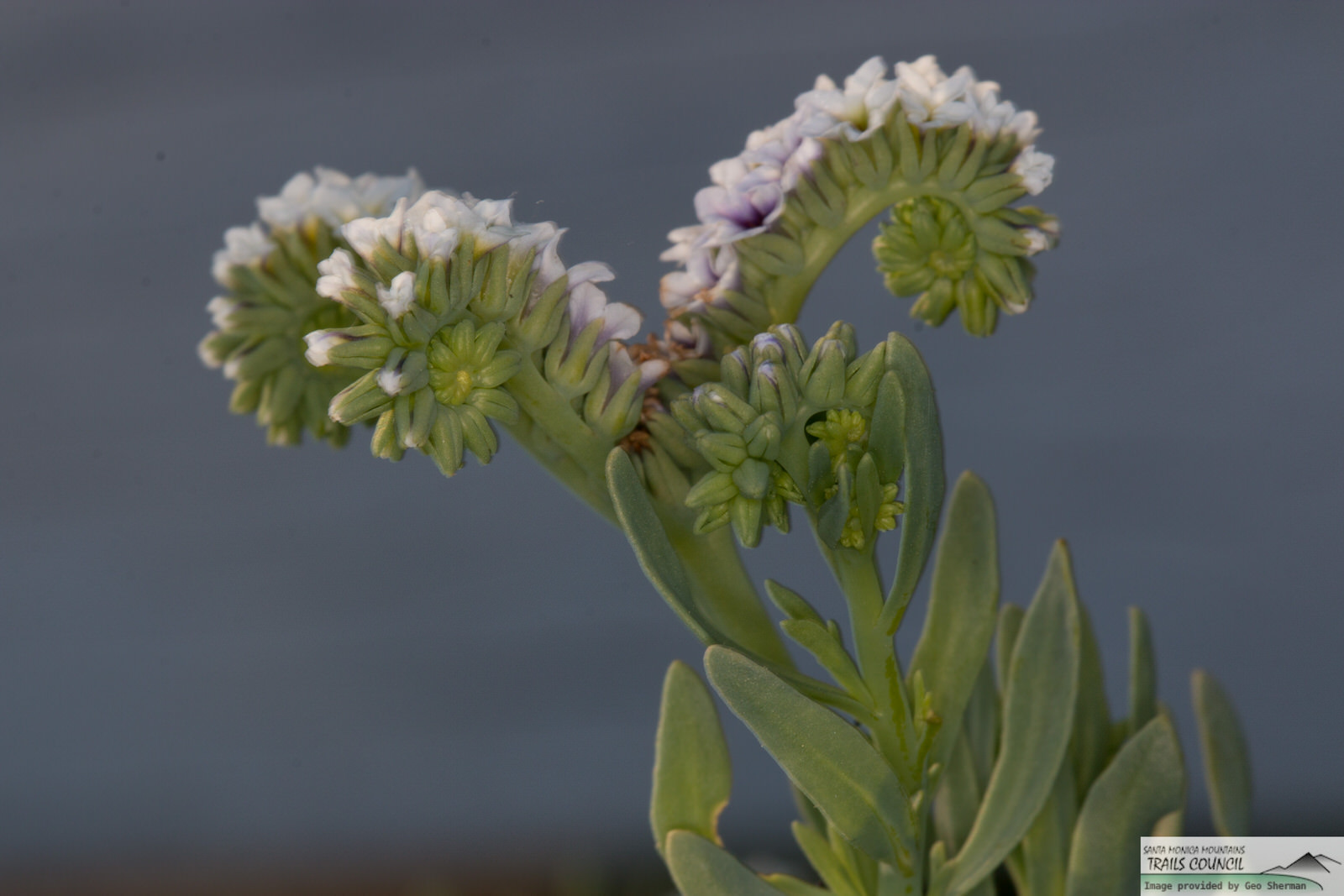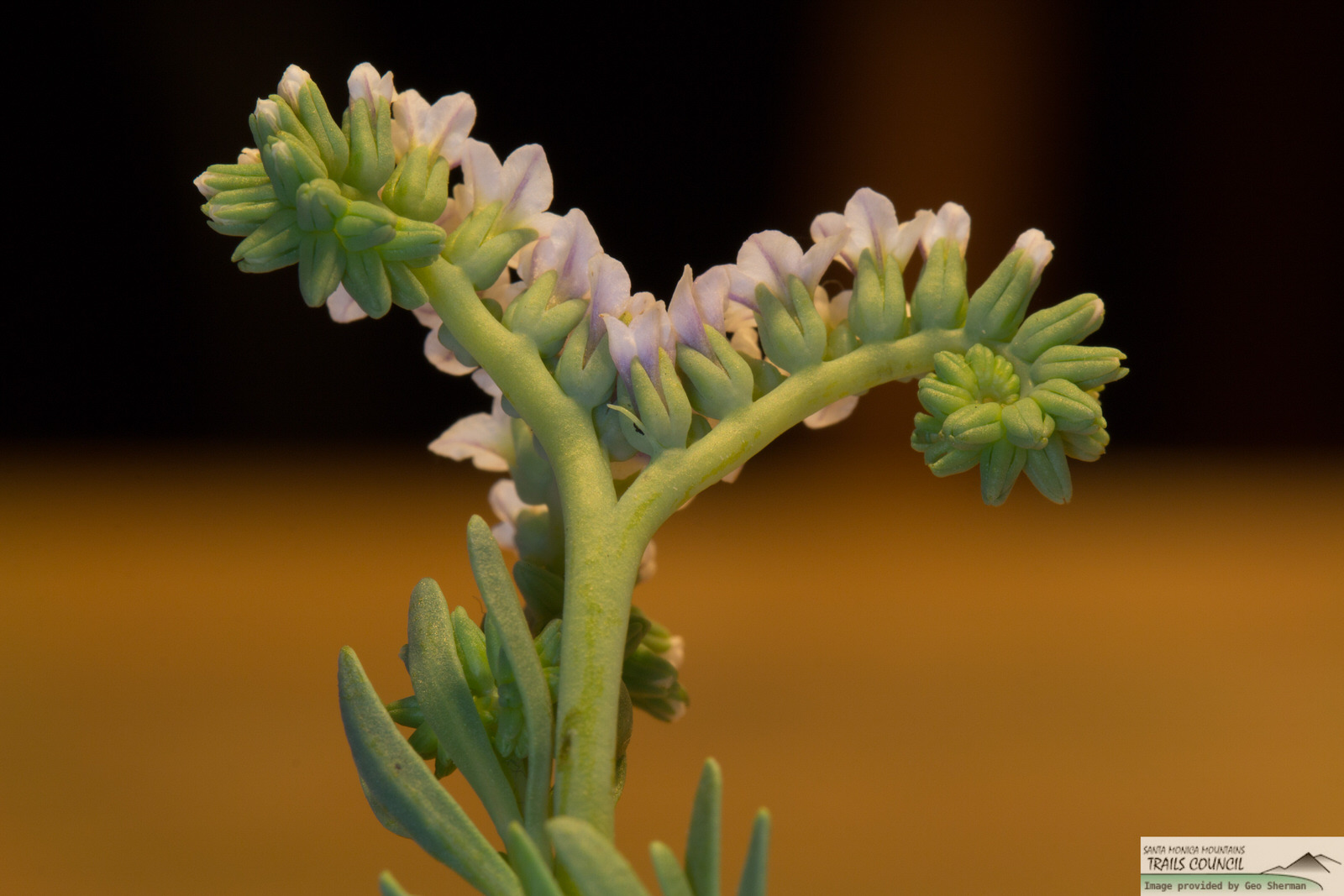Wild Heliotrope
- Heliotropium curassavicum
| Common Name(s): | Wild Heliotrope |
| Scientific Name: | Heliotropium curassavicum |
| Family: | Boraginaceae (Borage) |
| Plant Type: | Perennial |
| Size: | up to 15 inches |
| Habitat: | Moist to Dry Saline Soils |
| Blooms: | April to November |
| Fire Response: | Stump Sprout or Seed |
Wild Heliotrope or Heliotropium curassavicum is a Perennial Herb that favors disturbed saline soils (moist or dry), grows in dense stands and can handle cold well enough to thrive in other mountain ranges in North and South America at elevations up to 6,300 feet.
I located these plants in Pt. Mugu State Park. Other common names for this flower are Salt Heliotrope (hence the saline soils preference) as well as Quail Plant (Quail eat the seeds). Appearance-wise the plant is a fleshy (the leaves are fleshy enough to be described as succulent), bluish-green, smooth plant with leafy stems low to the ground - the proper term this is prostrate, the most striking feature of this plant are coils of small, white or purplish-tinged flowers. Often these coils will be paired creating a very symmetrical appearance. The height of the plant can vary from six inches to about fifteen inches.
This perennial has several strategies for survival and proliferation. Wild Heliotrope can reproduce by seed or can develop from shoots (rhizomes) and buds. Once the plant has established itself in an area, seed germination is of less importance and further growth is thru the spreading of the shoots and buds. As for pollination, the flowers change colors from white-yellow to purple. This strategy leads pollinators away from fertilized flowers towards the unfertilized flowers and has to be similar to Lupines that go thru a color changing process. In Lupines the plant releases Ethylene gas to make this happen and is the same gas that ripens tomatoes and bananas.
This plant is a member of the same plant family as Phacelias - the one obvious trail is the coiled strand of flowers. The flowers are quite small and numerous, often appear in the varying stages of growth. The five sharply pointed petals with their delicate shades of color certainly add some beauty to the outdoor experience!
Link to Calflora.net - the best source of this fascinating information
Name Origin: "heliotrope" derives from the old idea that the inflorescences of these plants turned their rows of flowers to the sun. The species name - curassavi'ca/curassavi'cum: the -ica suffix shows that this is a place name from Curacao, an island in the Dutch West Indies where one of the first collections were made (thanks to www.calflora.net for this description)
Contributed by George Sherman
Featured Plants in the Boraginaceae (Borage) Family:
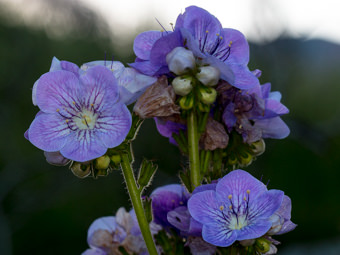
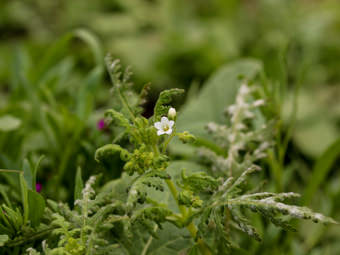
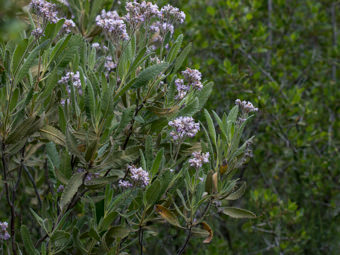
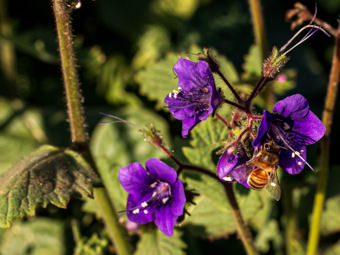
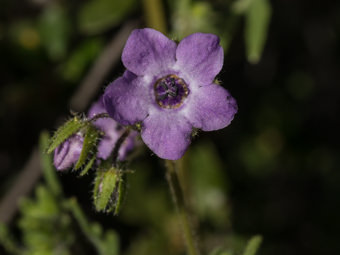
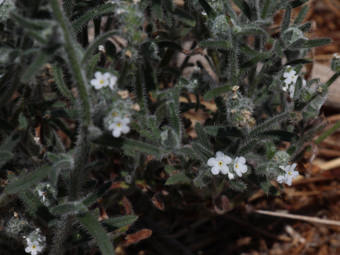
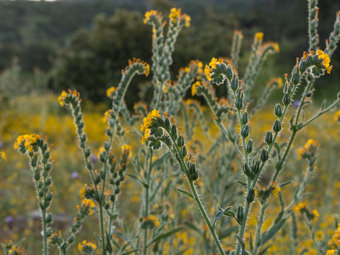
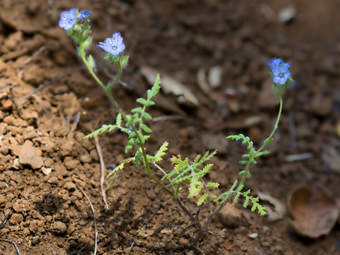
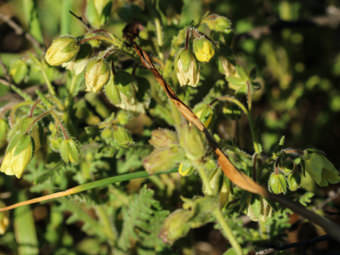
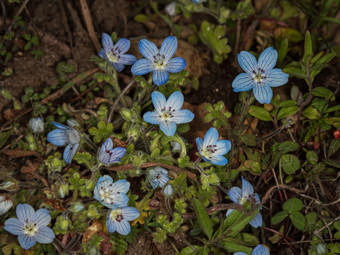
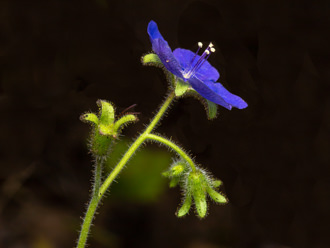
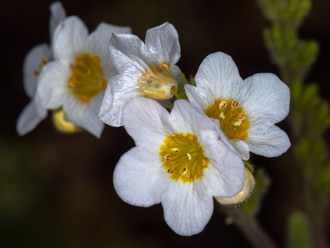
Last modified: August 21 2024 15:18:47.
Number of Images: 15
Image Size Total: 4,083,513
References:
Wildflowers of the Santa Monica Mountains, by Milt McAuleyFlowering Plants: The Santa Monica Mountains, Coastal and Chaparral Regions of Southern California, by Nancy Dale
Chumash Ethnobotany: Plant Knowledge Among the Chumash People, by Jan Timbrook
Leaf Shapes Primer - Botanical Terms for Leaves: - Link

